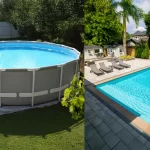There are possibilities and problems in integrating traditional aesthetics with modern performance needs in urban building. To enhance building performance, developers and architects working in urban areas or close to transit routes need to control this acoustic intrusion. The difficulty is in designing windows that give significant levels of sound attenuation while preserving the historic character of heritage structures.
Slender sightlines, putty-line design, and deep-profile sashes are characteristics of heritage aluminium window designs that have changed the material’s look and functionality in conservation environments. These systems mimic the appearance of conventional steel or wood windows while outperforming them in terms of sound control, durability, and thermal efficiency. The quality of installation, seal integrity, frame design, and glass composition all affect acoustic achievement in these systems. Targeting certain frequency ranges, especially road noise, has been accomplished with acoustic laminate glazing, which is made up of multiple panes of glass joined by a unique interlayer.
To act as acoustic barriers, heritage aluminium frames might be designed with polyamide thermal breaks and multi-chambered profiles. Gaskets and pressure-equalized drain pathways can be included into contemporary aluminium profiles to minimise air leakage and sound intrusion, maintaining the historic façade’s character and promoting acoustic tranquilly. The effectiveness of legacy aluminium windows for acoustic-sensitive applications is demonstrated by urban retrofitting initiatives, such as the conversion of old manufacturing facilities into loft-style residences. High-performance aluminium windows can reduce interior noise levels by up to 40 dB when single-glazed steel windows are replaced.
The use of acoustically certified window systems, including historical aluminium windows, in newly constructed and renovated homes has been promoted by laws and building standards. Authorised Document E of the Construction Regulations in the UK establishes minimum standards for sound insulation, and acoustic performance is credited in environmental evaluation techniques such as BREEAM and LEED. In order to attain acoustic perfection without sacrificing the visual appeal of vintage windows, manufacturers have reacted with advanced design approaches including unique glazing bars and hidden trickle vents.
Heritage aluminium windows‘ acoustic performance necessitates a comprehensive strategy that incorporates roof treatments, wall insulation, and junction detail. The advantages of high-performance windows may be compromised by inadequately sealed perimeters. Because vintage projects need skill and attention to original building techniques, professional commissioning and installation are essential. When sourced and manufactured sustainably, aluminium is infinitely reusable and supports the ideas of the circular economy. At the conclusion of their life cycle, contemporary historical windows are completely recyclable and frequently contain recycled materials. By lowering the need for artificial heating and cooling, they help to increase energy efficiency.

 How can you save money on moving & storage without sacrificing quality?
How can you save money on moving & storage without sacrificing quality?  OK.com Launches in US Market, Integrating AI Technology into Local Classifieds Experience
OK.com Launches in US Market, Integrating AI Technology into Local Classifieds Experience  Learn Everything About In-Ground vs. Above-Ground Pool Elimination
Learn Everything About In-Ground vs. Above-Ground Pool Elimination  The Smart Buyer’s Guide to Custom Canvas Prints in the UK
The Smart Buyer’s Guide to Custom Canvas Prints in the UK  Designing a Factory? Vastu Tips That Could Improve Energy Flow, Productivity & Profit
Designing a Factory? Vastu Tips That Could Improve Energy Flow, Productivity & Profit  How a General Contractor Manages Large Renovation Projects
How a General Contractor Manages Large Renovation Projects  Why Ongoing Support Is More Valuable Than a Low Initial Price When Installing Stairlifts In Scotland?
Why Ongoing Support Is More Valuable Than a Low Initial Price When Installing Stairlifts In Scotland?  How To Repair The Roof Penetration That Causes Vent Pipe Leaks
How To Repair The Roof Penetration That Causes Vent Pipe Leaks